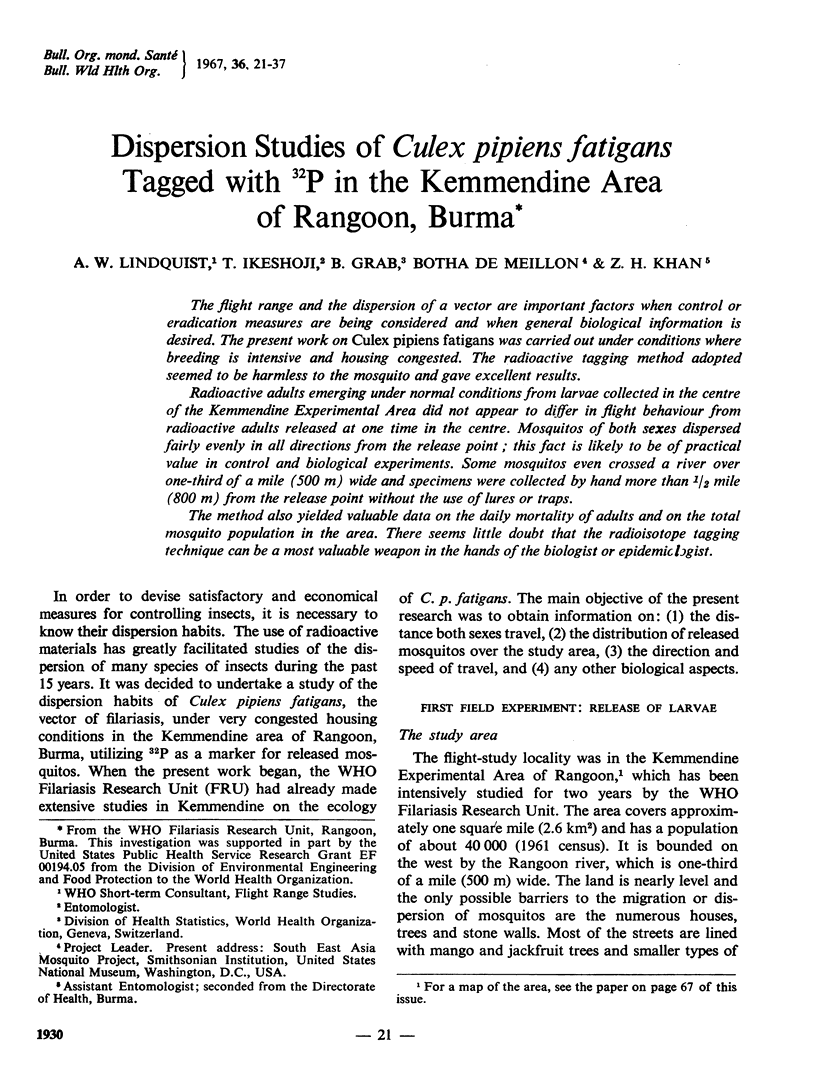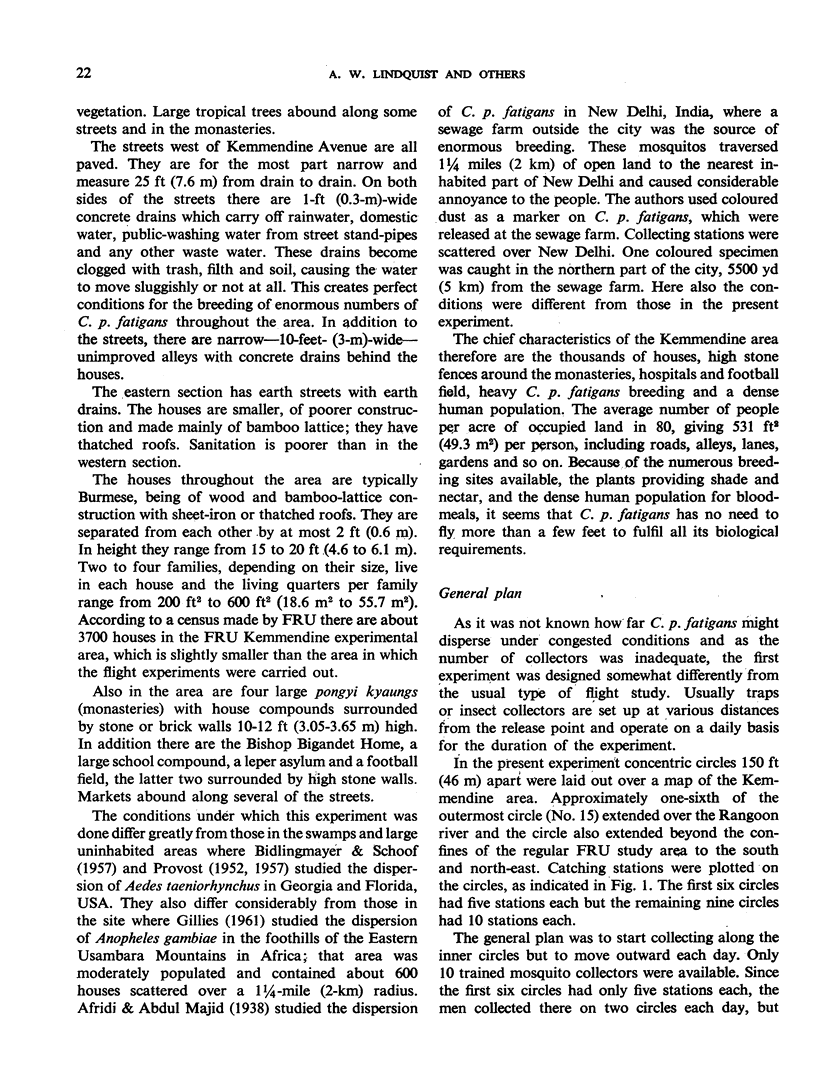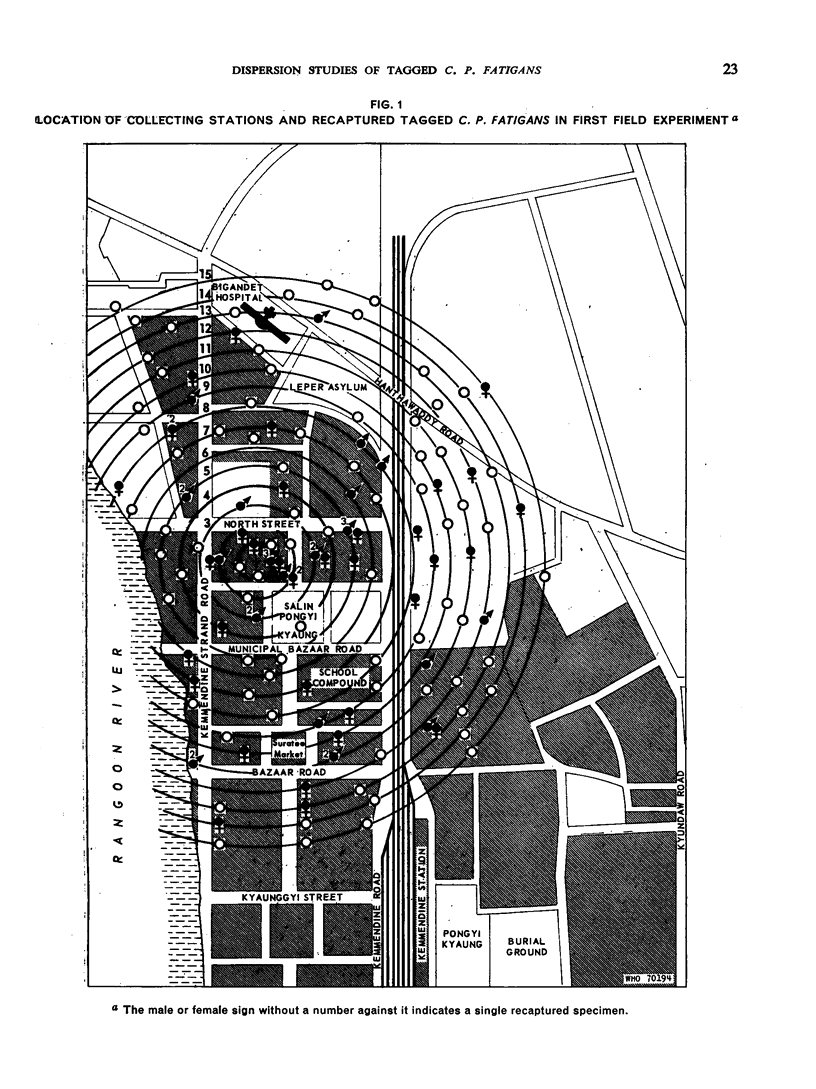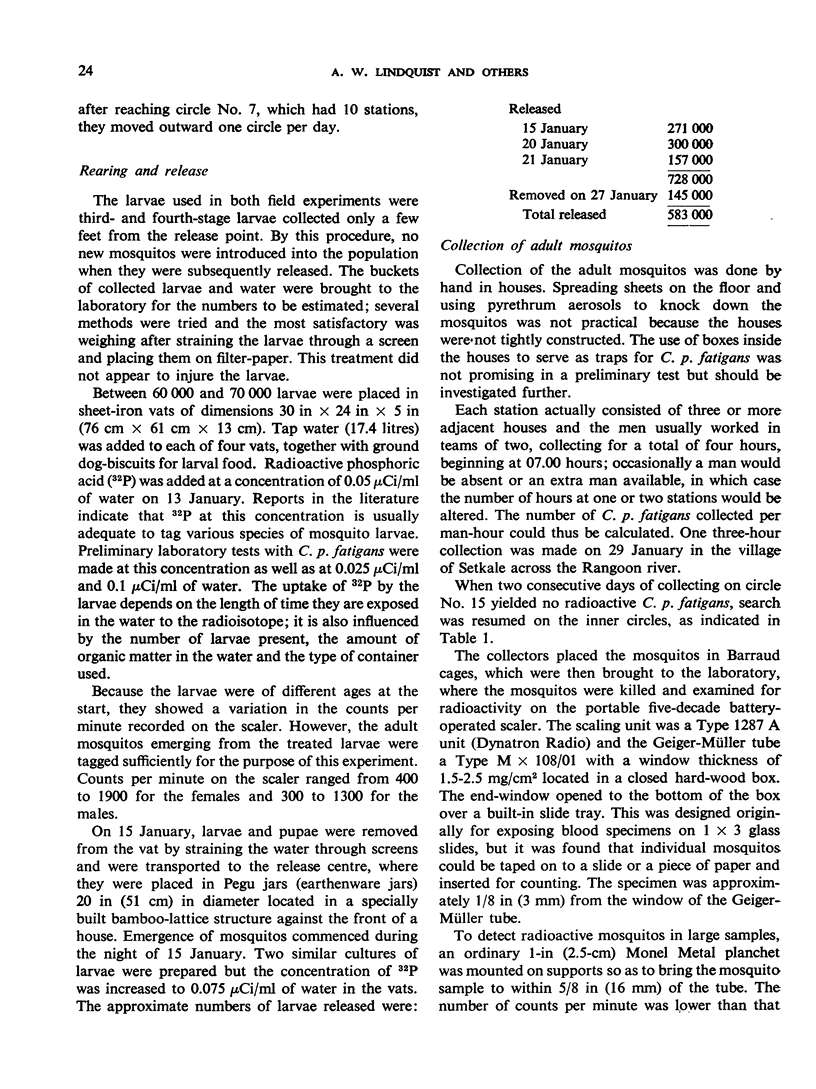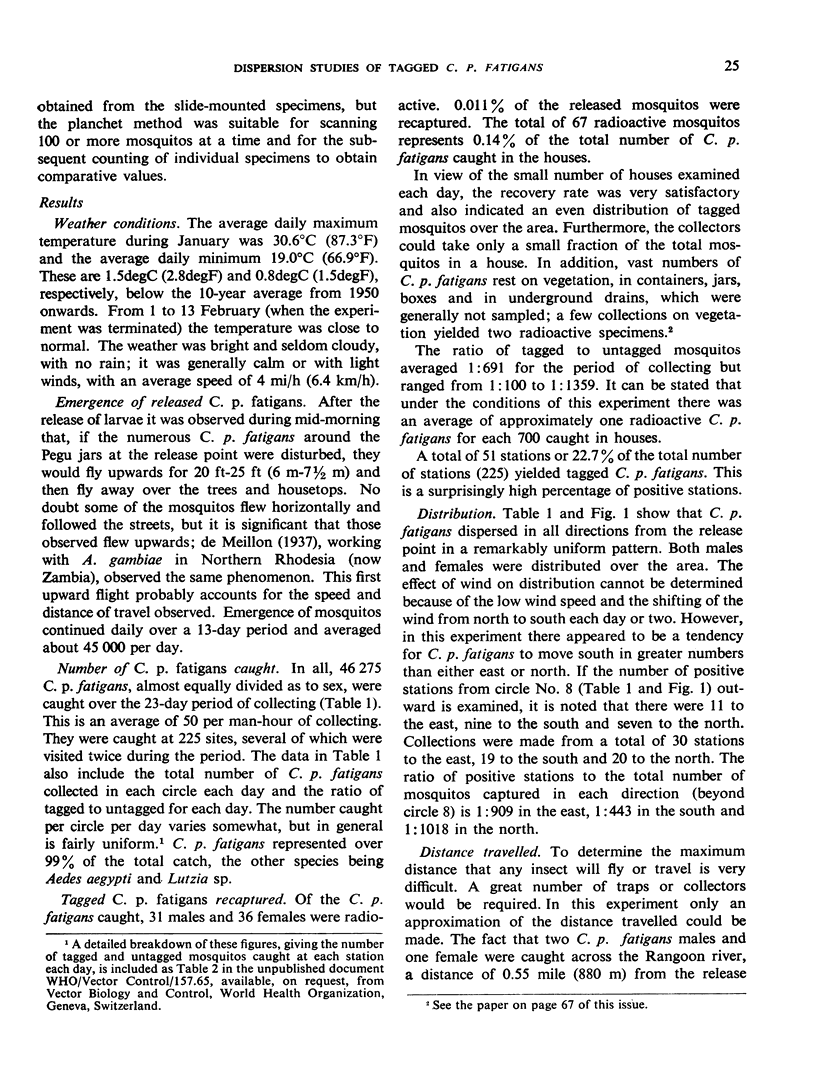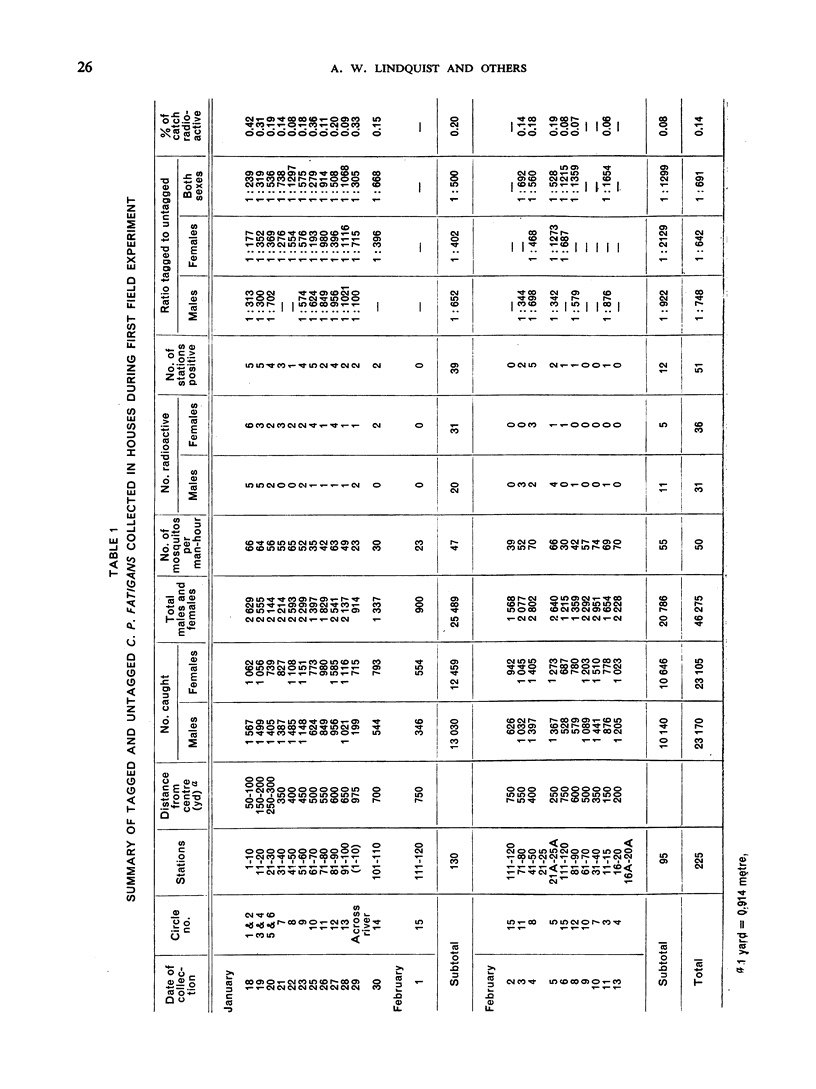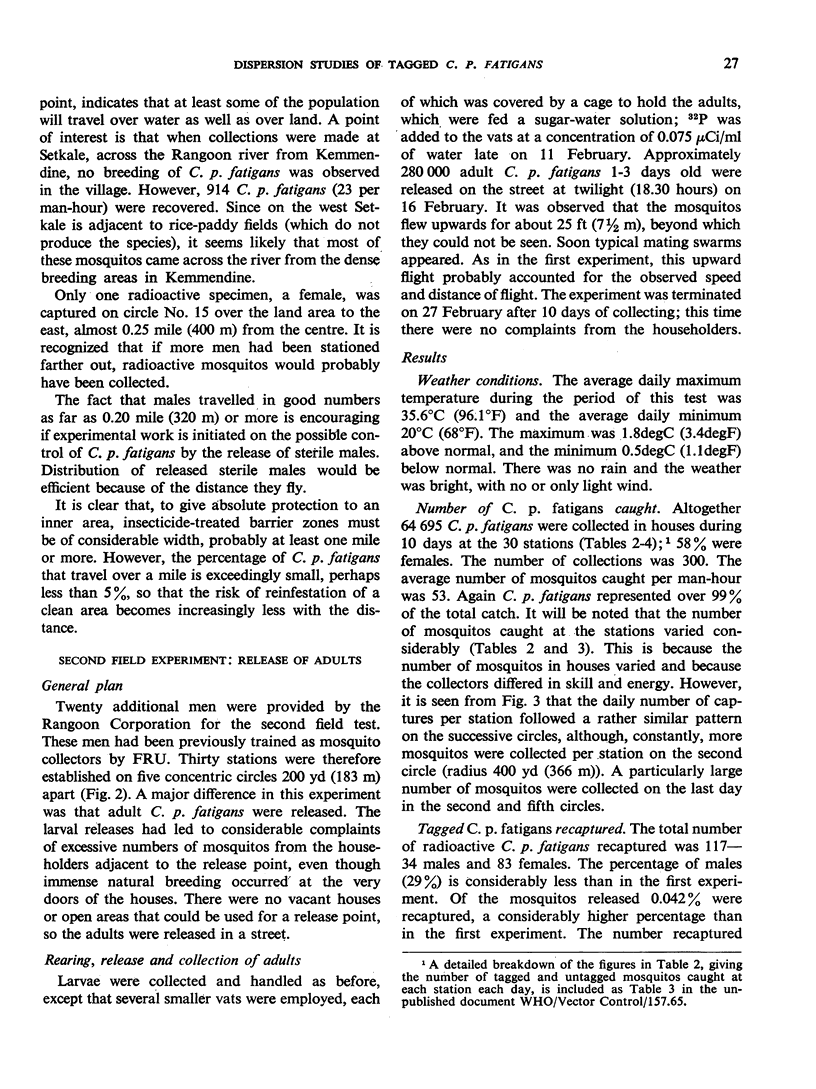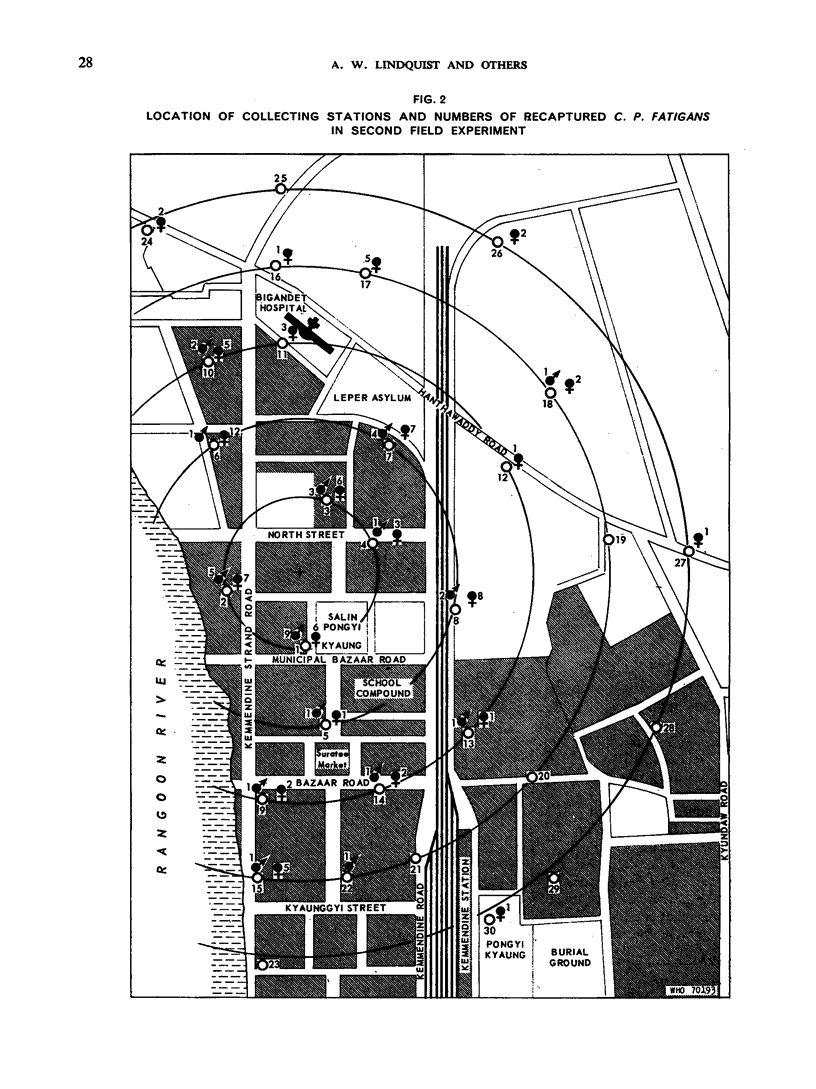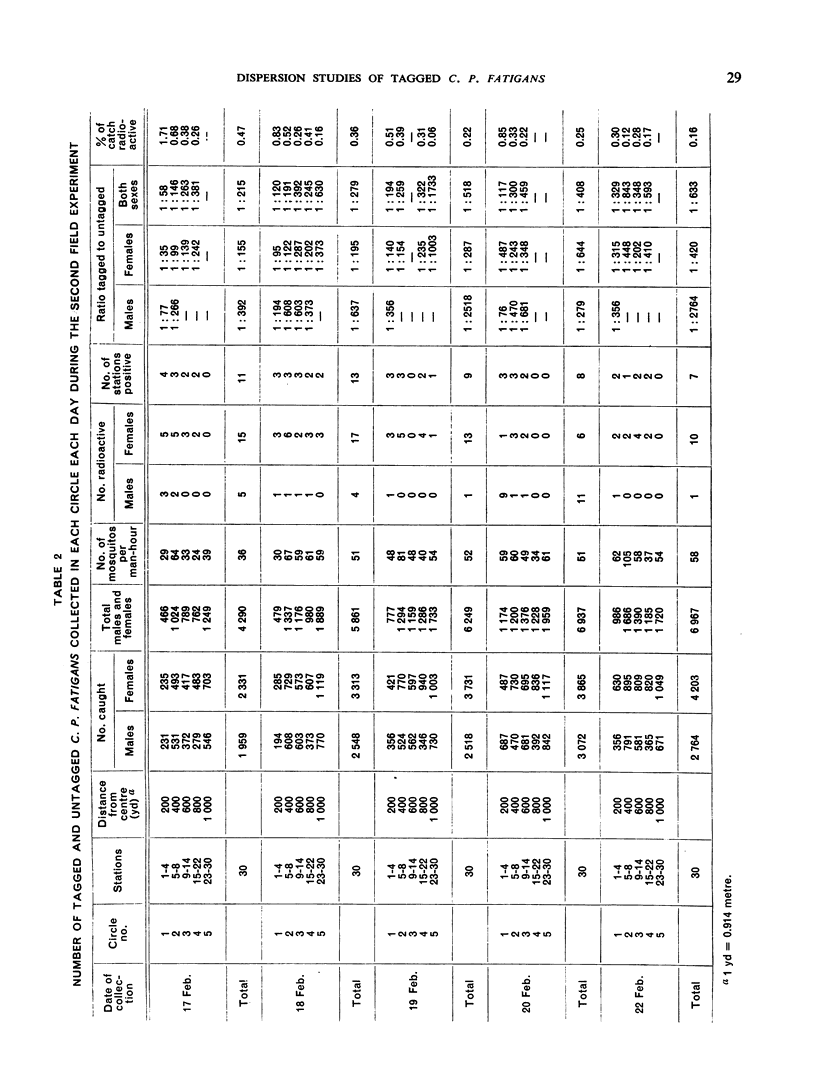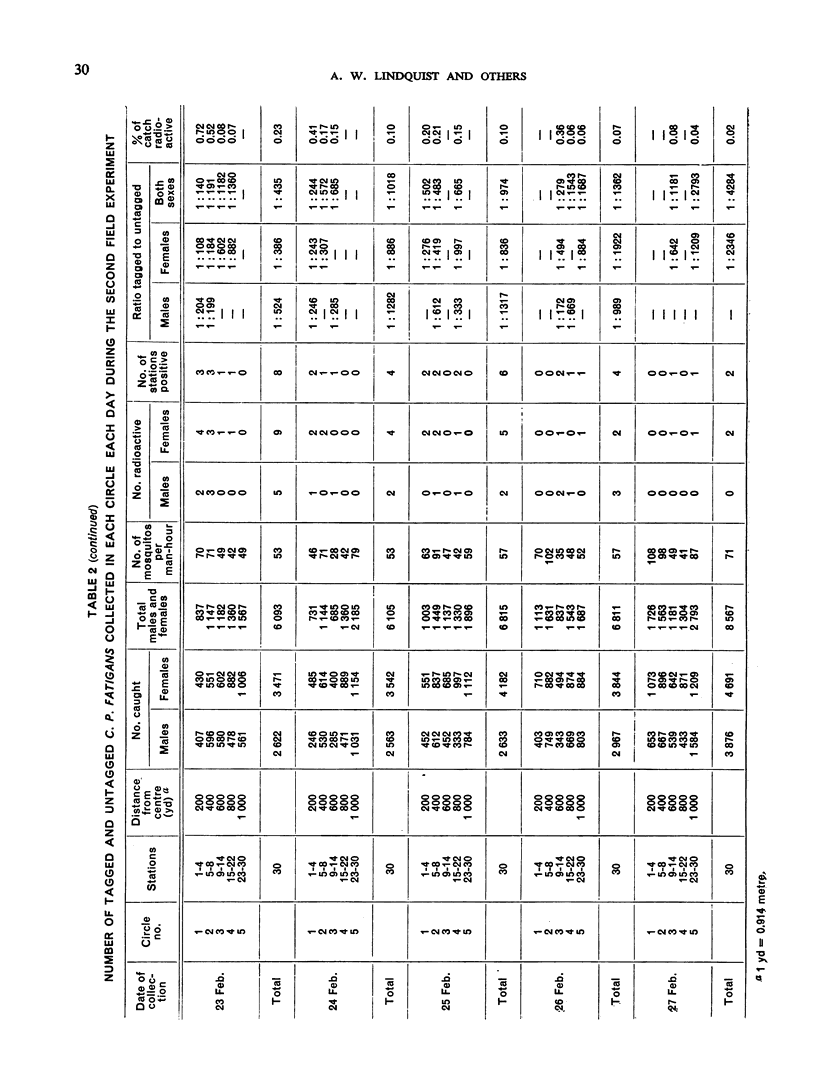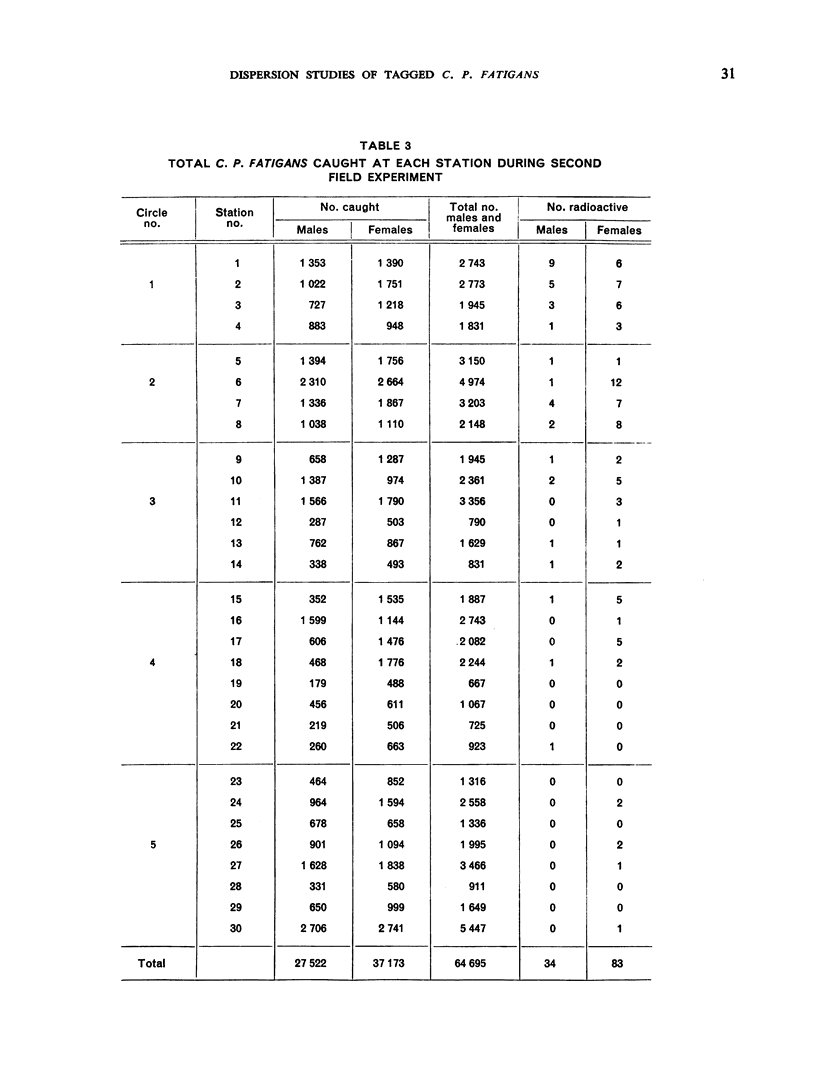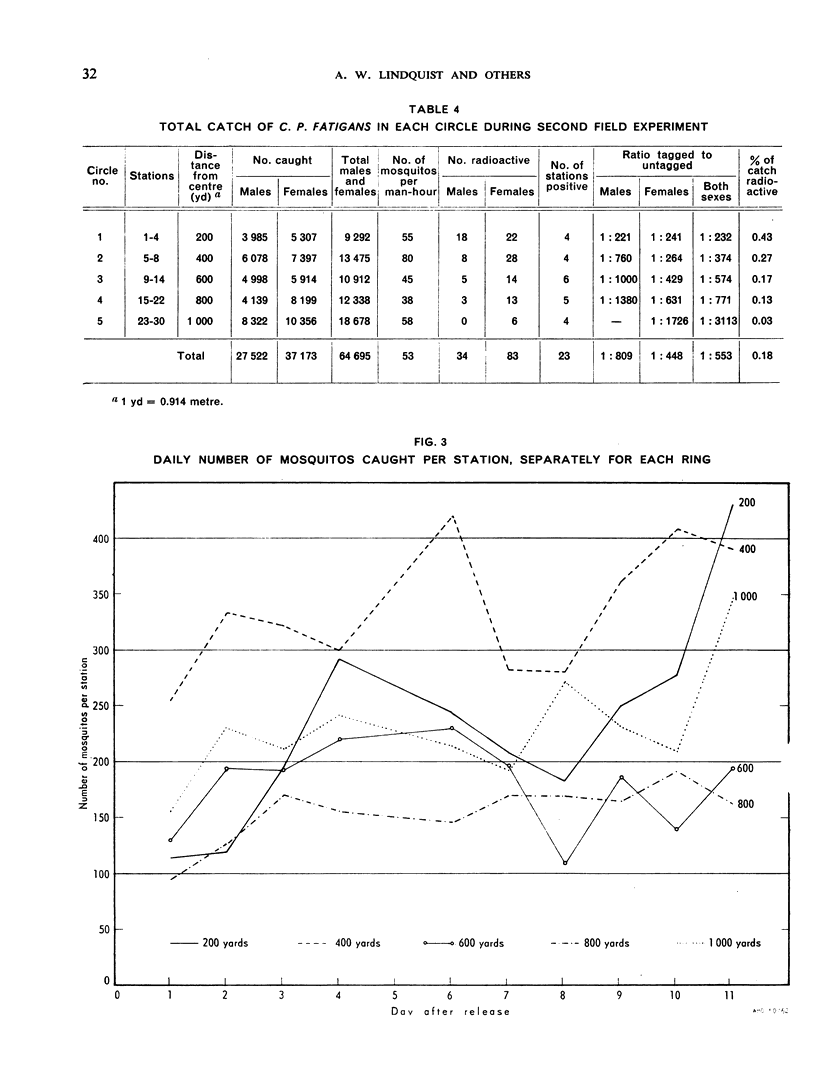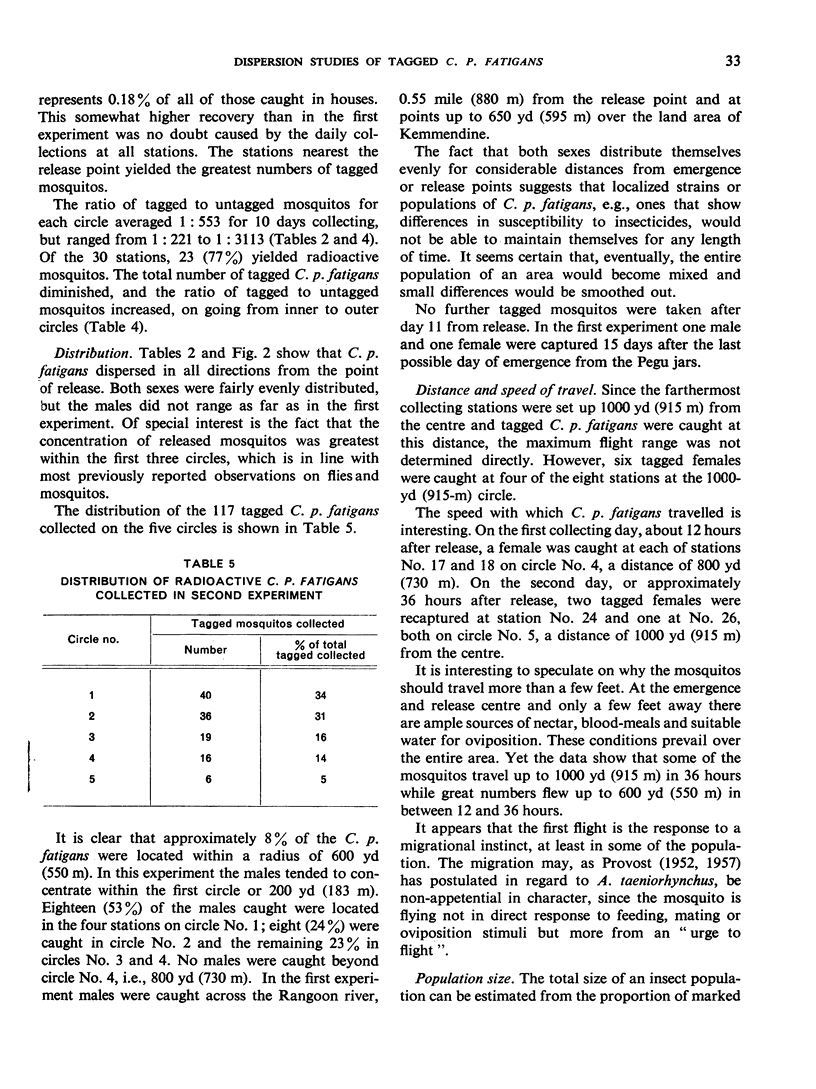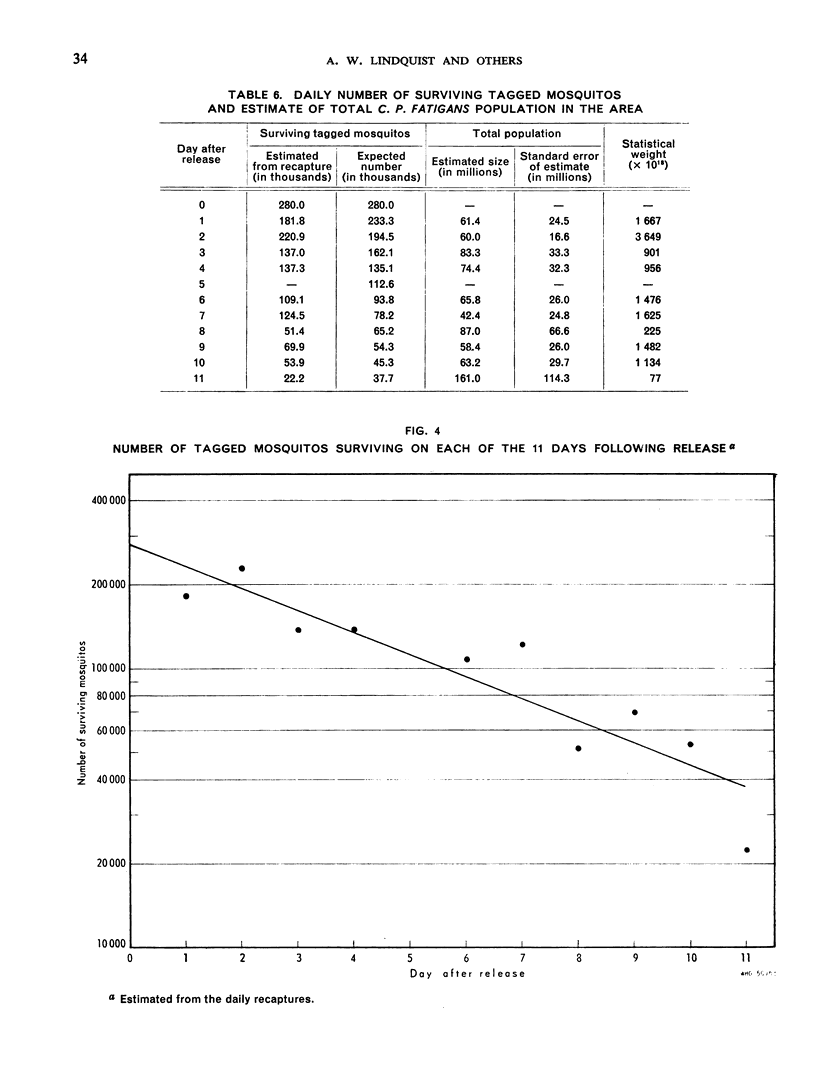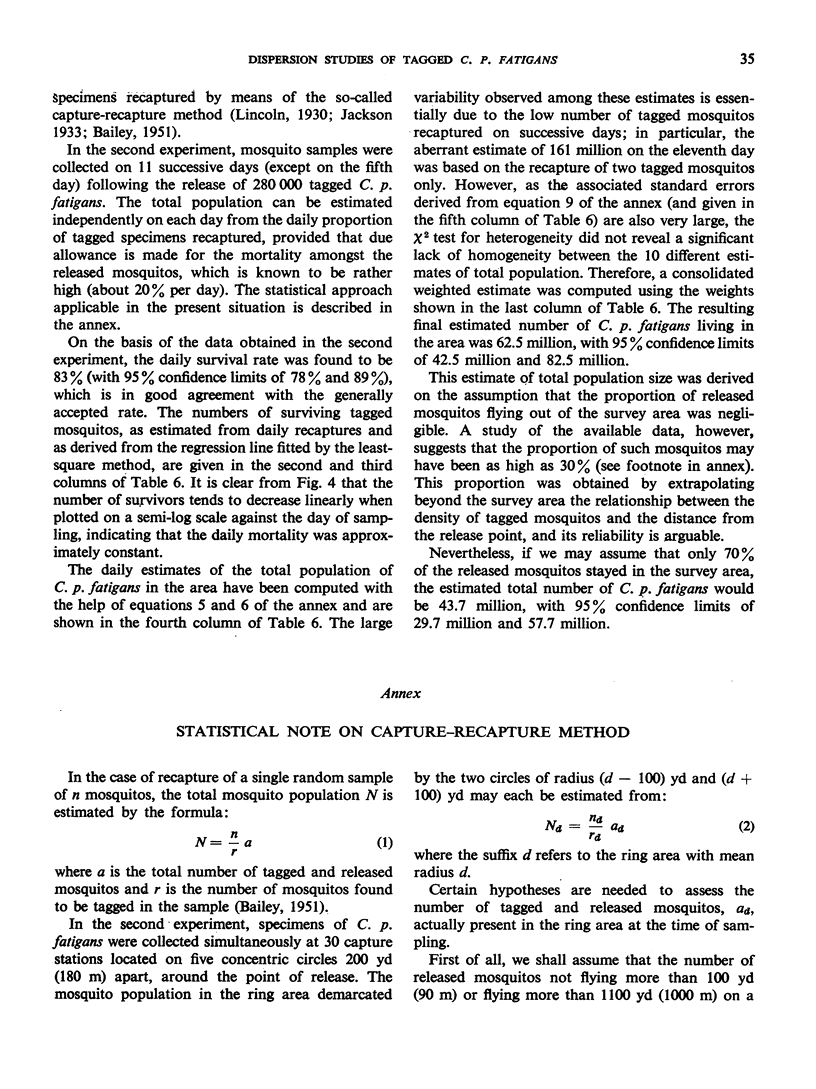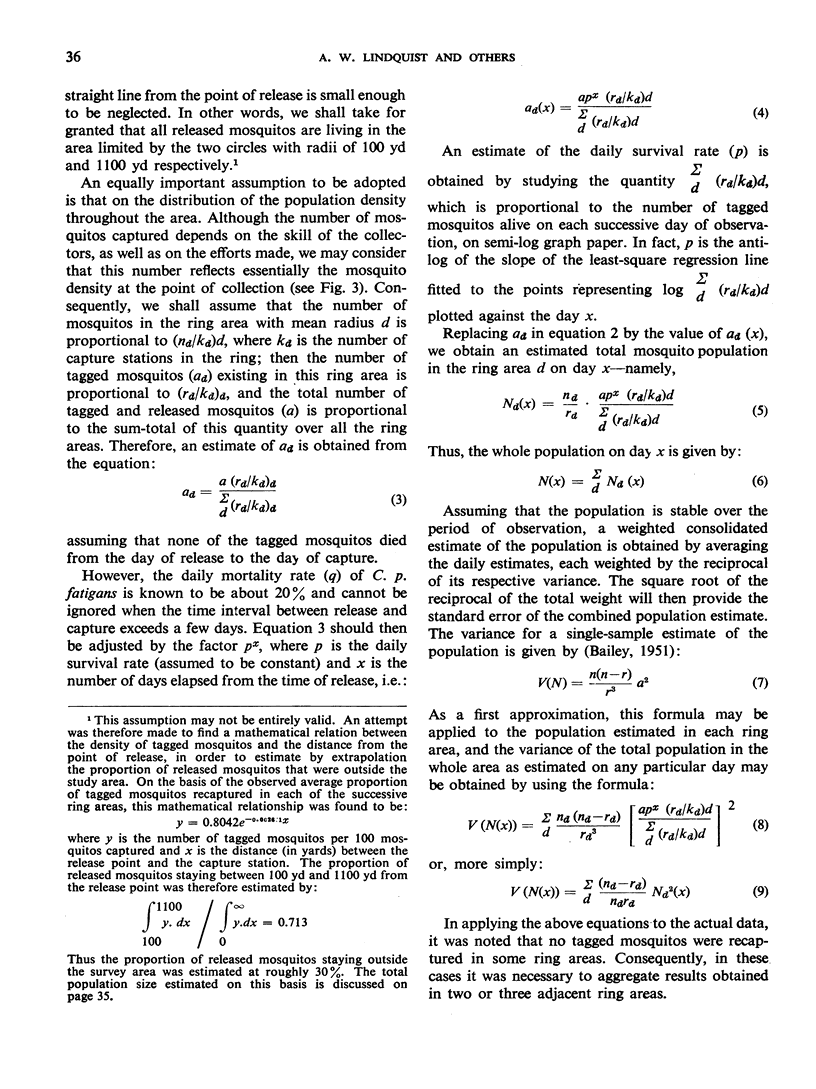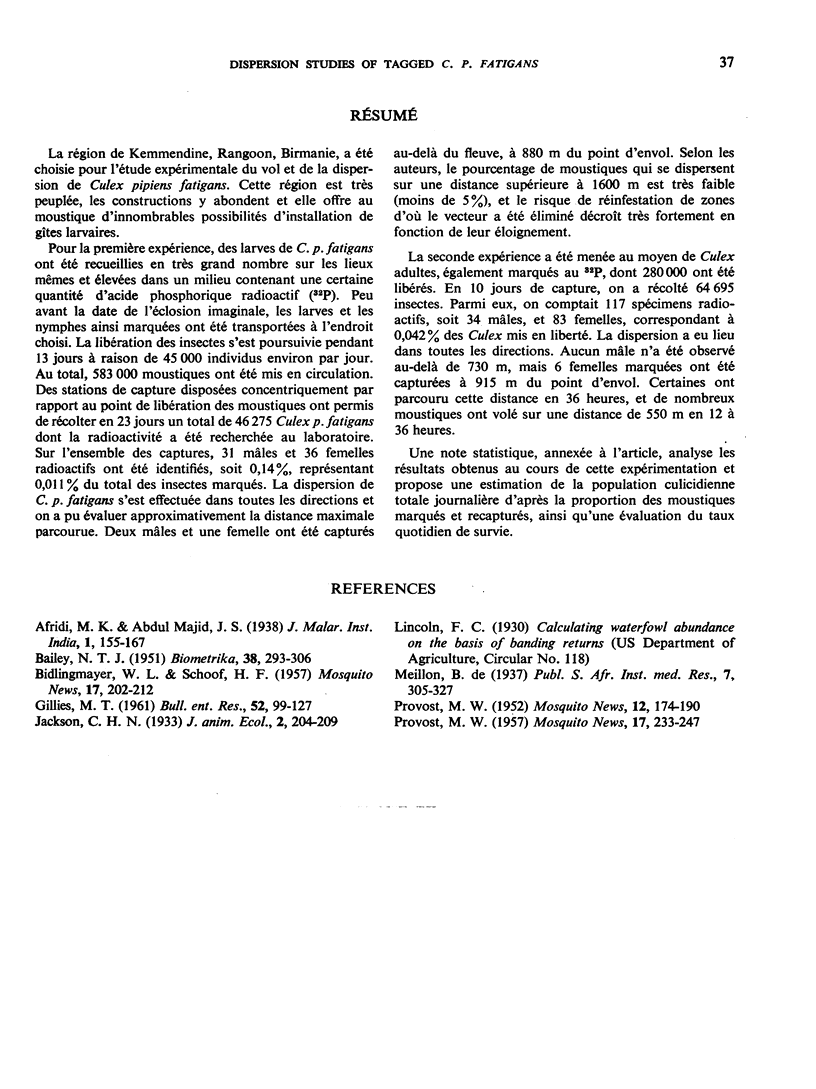Abstract
The flight range and the dispersion of a vector are important factors when control or eradication measures are being considered and when general biological information is desired. The present work on Culex pipiens fatigans was carried out under conditions where breeding is intensive and housing congested. The radioactive tagging method adopted seemed to be harmless to the mosquito and gave excellent results.
Radioactive adults emerging under normal conditions from larvae collected in the centre of the Kemmendine Experimental Area did not appear to differ in flight behaviour from radioactive adults released at one time in the centre. Mosquitos of both sexes dispersed fairly evenly in all directions from the release point; this fact is likely to be of practical value in control and biological experiments. Some mosquitos even crossed a river over one-third of a mile (500 m) wide and specimens were collected by hand more than ½ mile (800 m) from the release point without the use of lures or traps.
The method also yielded valuable data on the daily mortality of adults and on the total mosquito population in the area. There seems little doubt that the radioisotope tagging technique can be a most valuable weapon in the hands of the biologist or epidemiologist.
Full text
PDF